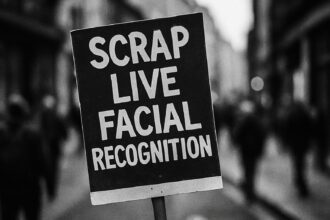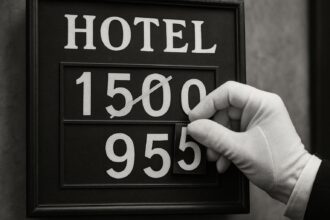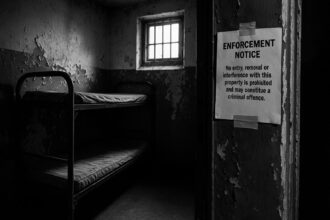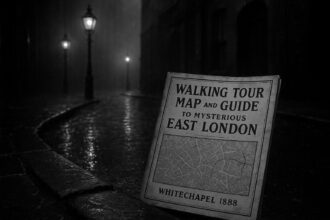The fatal shooting of innocent Brazilian electrician Jean Charles de Menezes at Stockwell Tube station exposed catastrophic errors and misjudgements by the Metropolitan Police amid heightened terror alerts, sparking ongoing debates over police transparency and civil liberties.
At Stockwell Tube station in South London, members of the Metropolitan Police were initially celebrating what they believed was a successful operation against terrorism. They had shot dead a man they thought to be Hussain Osman, a suspect connected to the recent wave of al-Qaeda suicide bombings that had devastated London a month earlier. On that warm July morning in 2005, the city remained tense and fearful following the tragic 7/7 bombings that had taken the lives of 52 people.
The scene was chaotic, with firearms officers retreating from the stationary train after the shooting, believing they were confronting another imminent threat. However, the grim discovery made by explosives expert Ian Jones would soon shatter the illusion of a job well done. Upon examining the man’s body, he found no explosive device and confirmed to his team that they had mistakenly shot an innocent person, Jean Charles de Menezes, a Brazilian electrician with no links to terrorism.
The shooting of de Menezes took place just a day after attempted bomb attacks on London transport, leaving the police on high alert. However, eyewitness accounts soon began to contradict the official narrative. Witnesses described the man shot as wearing a baseball cap and a heavy coat, giving rise to suspicions that he might be carrying a bomb. Yet, upon reviewing CCTV footage—a request that was met with immediate concern from some within the force—it became clear that de Menezes had entered the station calmly, used his Oyster card, and was not running. He had been dressed in a light denim jacket, not the thick coat described in reports.
Detective Superintendent John Levett, who was placed in charge of the initial investigation, immediately recognised the seriousness of the situation. He was ordered to exclude the Independent Police Complaints Commission (IPCC) from the scene, an instruction that came from high up in the government, and which he found troubling. In discussions with senior officers, he voiced his concern that such a decision would only raise suspicions about the legitimacy of the shooting.
Despite the alarm bells ringing within the force, the narrative that began to emerge from Scotland Yard painted a picture of a justified police action. At a hastily convened press conference, Ian Blair announced that the shooting was linked to ongoing anti-terror operations and suggested that de Menezes had ignored police warnings. However, this account quickly unraveled when it became clear that there had been a catastrophic failure in identifying the victim as an innocent man, not a terrorist. Accompanying this confusion was the medley of misinformation disseminated to the public, including speculative claims about de Menezes’s background and behaviour.
The fallout from the tragic event was profound. Public gatherings and memorials sprang up in memory of de Menezes, who had been living in London for several years. His family expressed their outrage over what they described as “cold-blooded murder” and sought accountability from the police force. The Metropolitan Police faced serious scrutiny for their operational procedures and public communications, with critiques emerging from various quarters including former officers who spoke to the systemic failings that allowed the incident to unfold.
The IPCC took over the investigation but was hindered by the police culture that prioritised the protection and vindication of its officers over transparency. Delays in releasing accurate information further complicated the situation, with a persistent narrative suggesting that de Menezes had acted suspiciously even as the evidence contradicted such claims. In due course, no officers were charged for the killing, and the Crown Prosecution Service’s decision to pursue health and safety violations against the Metropolitan Police was a troubling response in the eyes of many.
The ensuing years witnessed a series of legal battles and public inquiries. Inquests into de Menezes’s death revealed a string of failures in the police’s account and handling of the event. A jury ultimately rejected the notion that the shooting could be classified as lawful and proposed an open verdict, but refrained from ruling it an unlawful killing. This ambiguity left many feeling that justice for de Menezes had not been served.
In the public mind, the shooting of Jean Charles de Menezes remains a poignant symbol of the costs of the heightened security climate following the 7/7 bombings—a tragic reminder of the critical balance between national security and the preservation of civil liberties. Soon to be examined again through the lens of popular media, a forthcoming Disney+ drama titled “Suspect” focuses on the flawed events surrounding the shooting. Starring Russell Tovey as Brian Paddick, the drama aims to illuminate the human aspects behind the tragedy and critique institutional failures, offering a fresh perspective on this harrowing chapter in British policing history.
This incident continues to echo in discussions about accountability and the limits of police action during times of crisis, stirring debates about the right to life and the responsibilities of those in power.
 Reference Map:
Reference Map:
- Paragraph 1 – [1], [4]
- Paragraph 2 – [1], [2], [5]
- Paragraph 3 – [3], [6]
- Paragraph 4 – [7]
- Paragraph 5 – [5], [6]
- Paragraph 6 – [2], [3]
Source: Noah Wire Services
- https://www.dailymail.co.uk/news/article-14791893/Scotland-Yard-Ian-Blair-disaster-Menezes-investigation-shocking-police-blunder.html?ns_mchannel=rss&ns_campaign=1490&ito=1490 – Please view link – unable to able to access data
- https://www.ft.com/content/02051742-978c-4fca-aff0-f52dcae21533 – Actor Russell Tovey stars in the Disney+ drama ‘Suspect’, a four-part series examining the 2005 police killing of Jean Charles de Menezes. Tovey portrays Deputy Assistant Commissioner Brian Paddick, who challenged the Metropolitan Police’s initial narrative that de Menezes behaved suspiciously. The series highlights the importance of art in uncovering historical truths and igniting public discourse, drawing parallels to other impactful dramatized stories like the Post Office scandal. Tovey met with Paddick to prepare for the role, aiming to portray him as stoic and principled. The series critiques the Metropolitan Police’s handling of the case, particularly figures like Ian Blair and Cressida Dick, and hopes to renew awareness of de Menezes’ humanity and the injustice he suffered. The series debuts on Disney+ on April 30, 2025.
- https://www.whattowatch.com/watching-guides/suspect-the-shooting-of-jean-charles-de-menezes-everything-we-know-about-the-drama – ‘Suspect: The Shooting of Jean Charles de Menezes’ is a four-part Disney Plus drama series, premiering on April 30, 2025, in the UK and Ireland. Written by Jeff Pope, it examines the tragic real-life events of July 22, 2005, when Brazilian electrician Jean Charles de Menezes was mistakenly identified as a terrorist and fatally shot by police at Stockwell tube station in London. Set against the backdrop of the 7/7 London bombings and subsequent failed attacks, the series depicts the heightened tensions, flawed surveillance, and institutional mistakes that led to Jean Charles’s death. Edison Alcaide, in his debut role, stars as Jean Charles, supported by a cast including Conleth Hill, Russell Tovey, Emily Mortimer, Max Beesley, and Daniel Mays. The narrative traces the manhunt, the misidentification, and the aftermath including public misinformation and the family’s quest for justice. The show draws on extensive research and consultations with the de Menezes family, aiming for accuracy and emotional depth. The series highlights systemic failings and offers a critical reflection on truth, accountability, and the tragic consequences of security overreach during times of national crisis.
- https://www.bbc.com/news/uk-35927775 – The family of Jean Charles de Menezes has lost a human rights challenge over the decision not to charge any UK police officer for his fatal shooting. The Brazilian was killed at London’s Stockwell Tube in 2005 by police who mistook him for a terror suspect. The decision that there was not enough evidence to prosecute anyone did not breach human rights laws, judges said. His family, who had argued that the bar for prosecution should be lower, said they were “deeply disappointed”. Mr de Menezes, an electrician who was 27, was followed and shot in the head by police marksmen who mistook him for a suicide bomber. The incident came amid heightened tensions two weeks after the 7 July London bombings – in which four suicide bombers killed 52 people – and one day after attempted bombings on the London public transport network.
- https://www.theatlantic.com/international/archive/2016/03/britain-de-menezes-shooting/475989/ – The European Court of Human Rights has ruled in favor of Britain’s decision not to charge police officers who shot and killed a Brazilian electrician in 2005 after mistaking him for a terrorism suspect. In its ruling, the court, in a 13-to-4 decision, ruled Britain had not violated Article 2 of the European Convention on Human Rights, which covers the right to life. A cousin to Jean Charles de Menezes, the 27-year-old electrician who was killed, had complained to the court that Britain “had not fulfilled its duty to ensure the accountability of its agents for his death.” A British investigation into de Menezes in 2009 resulted in no charges being filed against the officers who killed him. The decision not to prosecute any individual officer was not due to any failings in the investigation or the State’s tolerance of or collusion in unlawful acts, the European court ruled. Rather, it was due to the fact that, following a thorough investigation, a prosecutor had considered all the facts of the case and concluded that there was insufficient evidence against any individual officer to prosecute.
- https://www.bbc.com/news/uk-33080187 – In the days that followed the shooting, a makeshift memorial to Mr Menezes was set up outside Stockwell Tube station. The shrine of flowers, candles, pictures and newspaper articles became a gathering point for campaigners seeking answers over the incident. Almost a year after his death, the Crown Prosecution Service announced that no officers would be prosecuted, but the Met Police would be tried for breaching health and safety laws. A permanent memorial was unveiled on what would have been Mr Menezes 32nd birthday. On 1 November 2007, the force was found guilty at the Old Bailey of endangering the public over the operation that led to the shooting and fined £175,000 with £385,000 costs. A jury found the force broke health and safety laws when officers pursued Mr Menezes and shot him seven times. An inquest into Mr Menezes death began on 22 October 2008. The jury rejected the police account Mr de Menezes was killed lawfully by two officers and returned an open verdict. The coroner had instructed the jury not to return a verdict of unlawful killing, and gave it the choice of two possible verdicts. The Met Police settled a damages claim with Mr Menezes family in 2009. The amount of compensation the family will receive was not disclosed. In January 2010, Menezes family members and campaigners gathered at Stockwell station on what would have been his 32nd birthday to unveil a permanent memorial. A colourful mosaic framing a photograph of Mr Menezes was created by local artist Mary Edwards.
- https://news.bbc.co.uk/2/hi/uk_news/7084829.stm – London’s Metropolitan Police made serious and avoidable errors in killing an innocent man, a watchdog has said. Brazilian Jean Charles de Menezes was shot dead by officers at Stockwell Tube station in July 2005 after being mistaken for a suicide bomber. An Independent Police Complaints Commission (IPCC) report highlights what it says were failures in procedures and communication. And it says Commissioner Sir Ian Blair tried to prevent its investigation. Sir Ian has again rejected calls for his resignation.













